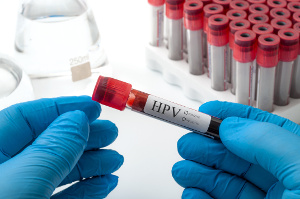Five antioxidants are able to reduce HPV infections that are linked to cervical cancer
 The majority of sexually active people contract HPV (human papilloma virus), of which there are several types. Normally, the infection goes away by itself but in some cases it becomes chronic. This increases the risk of serious cell changes in the cervix which, in worst case, can result in cervical cancer. An American study has found that having adequate levels of five different antioxidants – albumin plus vitamins A, B2, E, and folic acid – may lower papilloma virus infections that are linked to cervical cancer.
The majority of sexually active people contract HPV (human papilloma virus), of which there are several types. Normally, the infection goes away by itself but in some cases it becomes chronic. This increases the risk of serious cell changes in the cervix which, in worst case, can result in cervical cancer. An American study has found that having adequate levels of five different antioxidants – albumin plus vitamins A, B2, E, and folic acid – may lower papilloma virus infections that are linked to cervical cancer.
HPV – Human Papilloma Virus – is a large group of around 100 different virus types that are sexually transmitted. Eighty percent of sexually active people will contract at least one HPV infection in their lifetime. Around 90 percent of those infected with HPV are able to fight off the infection within a two-year period. In some cases, however, the infection becomes chronic with an increased risk of cell changes and cervical cancer. This cancer form is the fourth most common cancer type among women. On a global scale, it accounts for around 7.5 percent of deaths among women.
The development from infection to cell changes and cancer usually lasts between 10-15 years which means that there is time to prevent the disease by stopping it in its tracks.
Cervical cancer and oxidative stress
It was assumed earlier that the development of HPV-related cervical cancer was triggered by oxidative stress. This is when there is an imbalance between harmful free radicals and protective antioxidants. Free radicals are highly reactive molecules with a missing electron. Ironically, they are essential and lethal at the same time.
Free radicals are involved in the energy metabolism, immune defense and numerous other metabolic processes. The number of free radicals is heavily increased by stress factors, poisoning, etc. It is therefore important to keep the free radicals on a tight leash and make sure that they only carry out their specifically assigned tasks without causing damage to cells and their DNA. Our only source of protection against free radicals and oxidative stress is antioxidants that are able to donate an electron to neutralize the free radicals.
Oxidative stress sets the stage for a host of different diseases but science still hasn’t quite figured out how it is connected to cervical cancer. For that reason, a team of scientists from New Orleans School of Public Health in the United States wanted to take a closer look at this.
The five antioxidants that protect against HPV and cervical cancer
In the new study, the scientists looked closer at levels of 15 different antioxidants and the status of HPV infections in the cervix of more than 11,000 women aged 18-59 years. They were all part of the large National Health and Nutrition Examination Survey (NHANES) study during the period 2003-2016. The women were divided into three groups: No HPV infection, low-risk HPV infection, and high-risk HPV infection with cell changes (HR-HPV).
The study showed that lower serum levels of albumin and lower levels of vitamins A, B2, E, and folic acid were associated with a higher risk of developing cell changes and cervical cancer.
Albumin accounts for the major protein content in plasma where it has different roles. Lack of albumin is associated with impaired immunity and increased systemic inflammation. This affects free radicals and the risk of oxidative stress. According to Professor Hui-Yi Lin, the study shows that women in the quartile with the lowest antioxidant score in their blood had a higher risk of low-risk or high-risk HPV infections compared to women in the quartile with the highest antioxidant score. This was also the case after the researchers had adjusted for confounding factors such as age, race, smoking habits, drinking habits, and the number of sex partners within the last 12 months.
The new study is published in Journal of Infectious Diseases.
Vaccination and continued screening
Vaccinations are given against HPV types 6 and 11 that produce genital warts and type 16 and 18 that are responsible for 70 percent of cervical cancers. However, the vaccine does not protect against the remaining 30 percent of cervical cancers, which is why women still have to be screened even though they have been vaccinated. Cell samples are used to detect early stages of cervical cancer that can be treated in time, regardless if you are vaccinated or not. HPV vaccines are voluntary. Official websites of health authorities, cancer organizations, and family doctors should inform about possible side effects based on the law about informed consent.
References:
Lin, H-Y, et al. Antioxidants Associated with Oncogenic HPV Infection in Women. Journal of Infectious Diseases. 2021
Emily Henderson. Adequate levels of antioxidants may reduce HPV infection linked to cervical cancer development. News Medical Life Sciences. Apr. 2021
Kræft i livmoderhalsen (netdoktor.dk)
Informeret samtykke - Styrelsen for Patientsikkerhed (stps.dk)
Search for more information...
- Created on .








